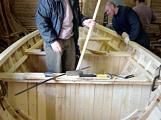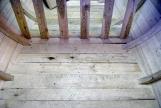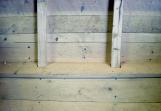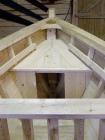14
Both covering boards were nailed into place around the top edge of the boat.15
The boat without any interior structures completed2003
Winterton Boat Building and Community Museum, Newfoundland and Labrador, Canada
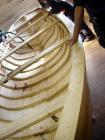
16
Thicker battens were installed around the top outer perimeter of the full length of the boat. This last section of the gunwales, called rubbers, provided extra durability in this area for hauling rope or lines when fishing or to help prevent damage if the boat knocked into the wharf or another boat.17
Two knees are installed above the counter2003
Winterton Boat Building and Community Museum, Newfoundland and Labrador, Canada
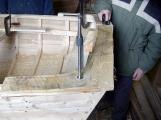
18
Two knees, called stern knees, were installed around the top of the counter (back of the boat).20
Shoots (cross-beam floor boards in the standing rooms) were attached across the keel and timbers on the bottom of the boat.22
In the mid-ship room, located at the center of the boat, ceilings (floor boards running lengthwise) were installed. This area was used for holding fish.24
An adjustable bevel was an essential tool especially for determining angle cuts when fitting inside ceilings and shoots.26
A small, decked compartment, called a cuddy, was built behind the stem for storage of things that needed to be kept dry.27
Bulkheads are installed2003
Winterton Boat Building and Community Museum, Newfoundland and Labrador, Canada
